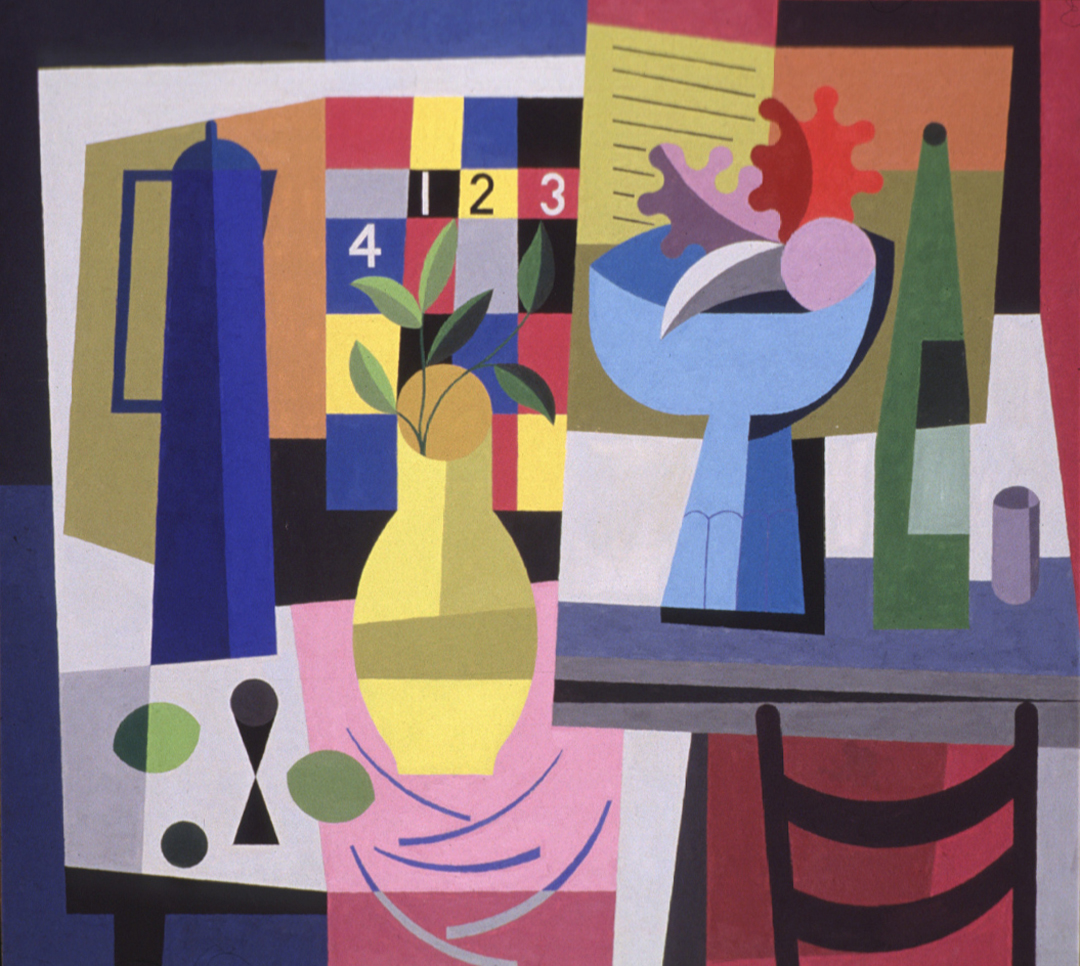Object of the Week: Still Life with Calendar

As we prepare for the last 31 days in our 2017 calendars, it becomes clear how quickly time flies. Where did the year go? In this 1956 work by Northwest artist Wendell Brazeau, Still Life with Calendar, time is certainly a preoccupation, as well as developments in abstraction imported from Europe during the years following World War II.
A painting that could only exist after the pictorial revolution brought about by Cubism, and Paul Cézanne before that, this work is a marker of an important moment in American painting when European theories made their way to artists living and working in the United States. Like many, Brazeau studied in Paris and worked first-hand with the European avant-garde, bringing such ideas back to the Northwest and pollinating the region with new modernist theories.[1]
One of the main genres of Western art, the still life takes many forms; whether arrangements of symbolic objects that point to the brevity of human life,[2] or celebrations of material wealth, the still life has fascinated artists for centuries. In more recent art history, the still life has become a foundation for formal experimentation.
Indeed, here flat geometric forms and bright planes of color unify a spatially ambiguous plane. We see lemons or limes perched precariously on the left-hand corner of the table, as well as a chair, coffee pot, flower vase, and fruit basket, all nearly sliding from their fixed positions. Behind this array of multi-toned vessels and objects we also see a small section of an incomplete calendar—a tongue-in-cheek inclusion that seems to simultaneously honor and scrap the genre’s interest with the passage of time. A knowing departure from the still life paintings of the 16th and 17th centuries, Still Life with Calendar playfully explores the possibilities of abstraction while wittily honoring the subject’s antecedents.
– Elisabeth Smith, Collections Coordinator